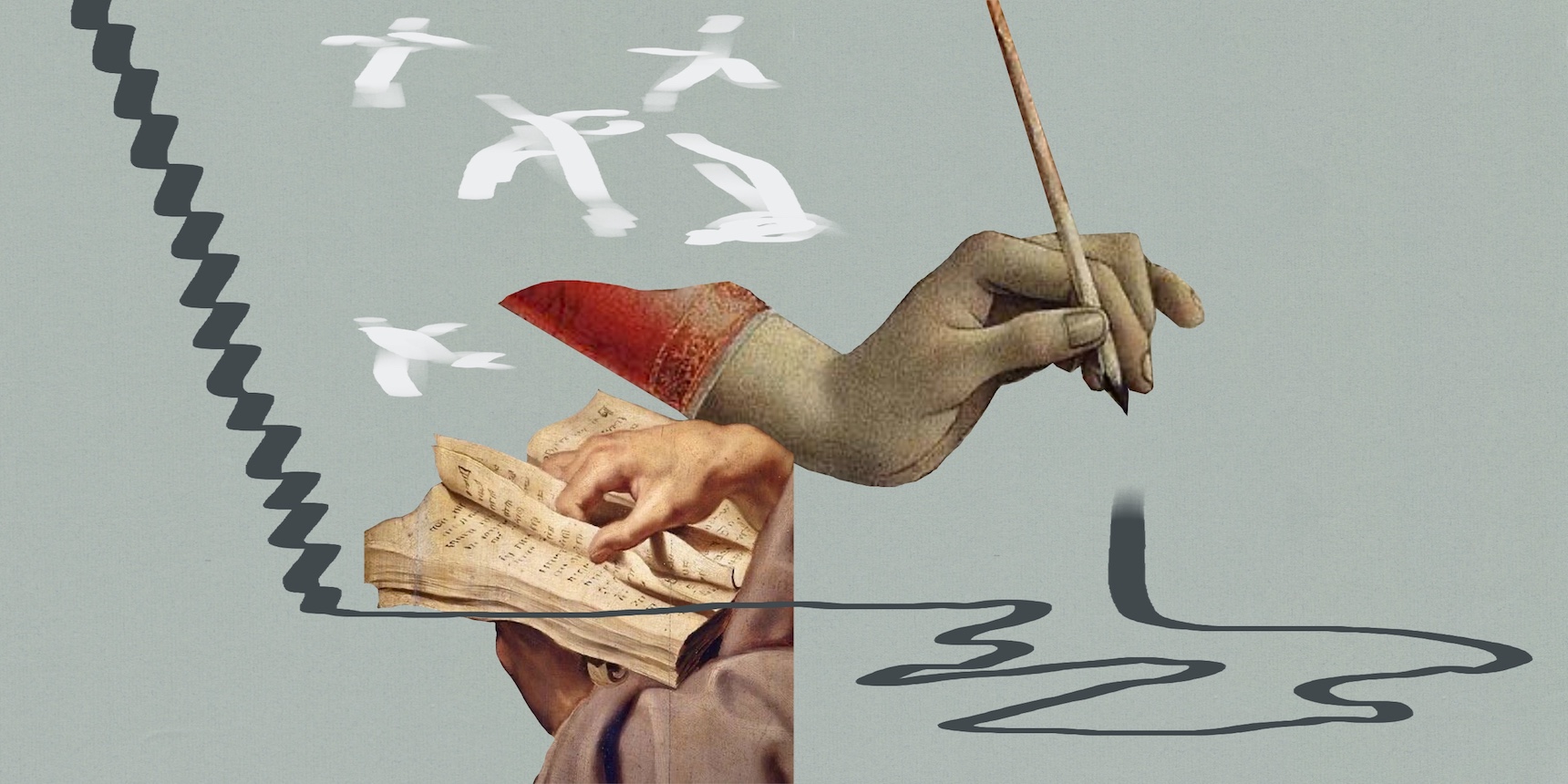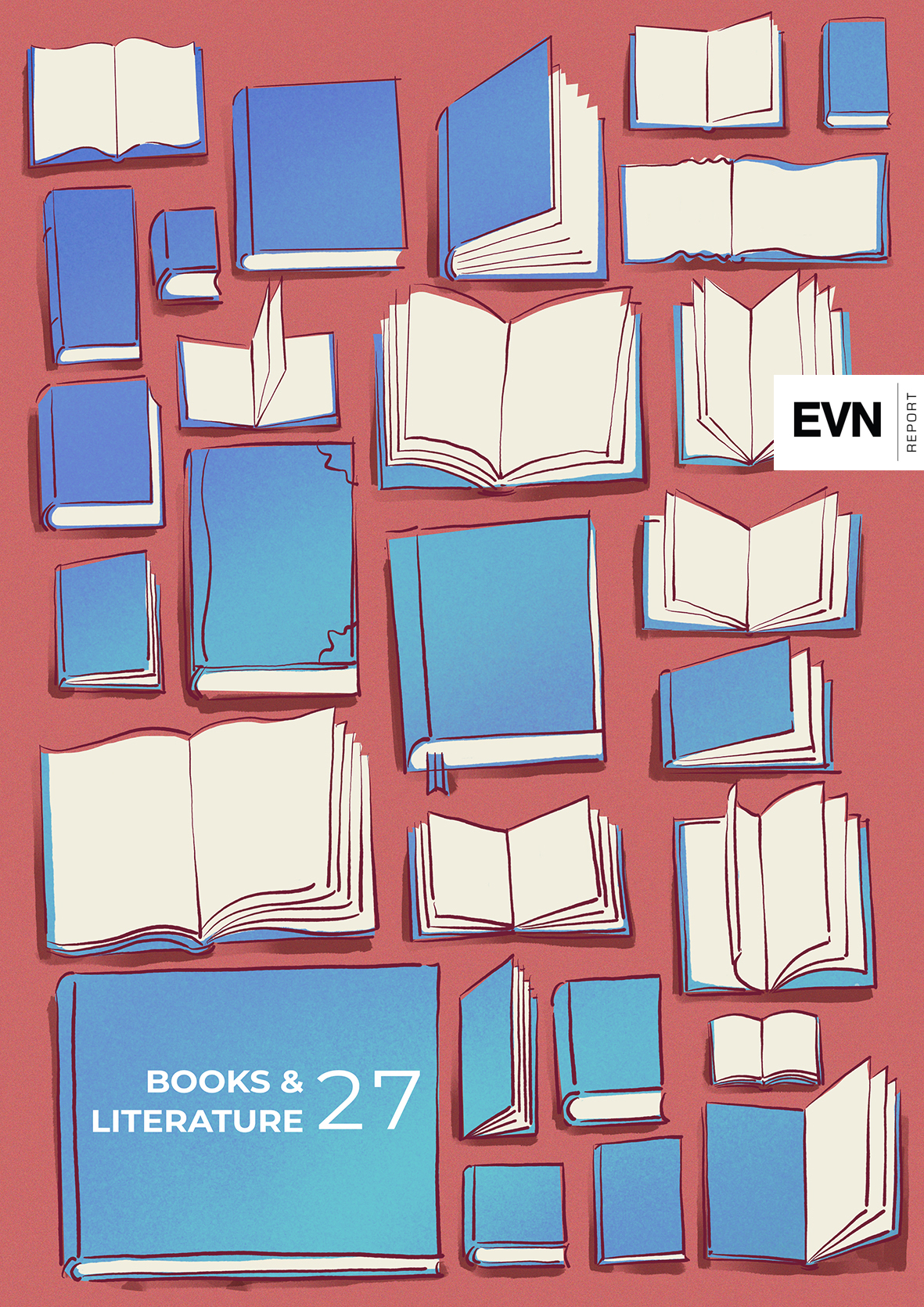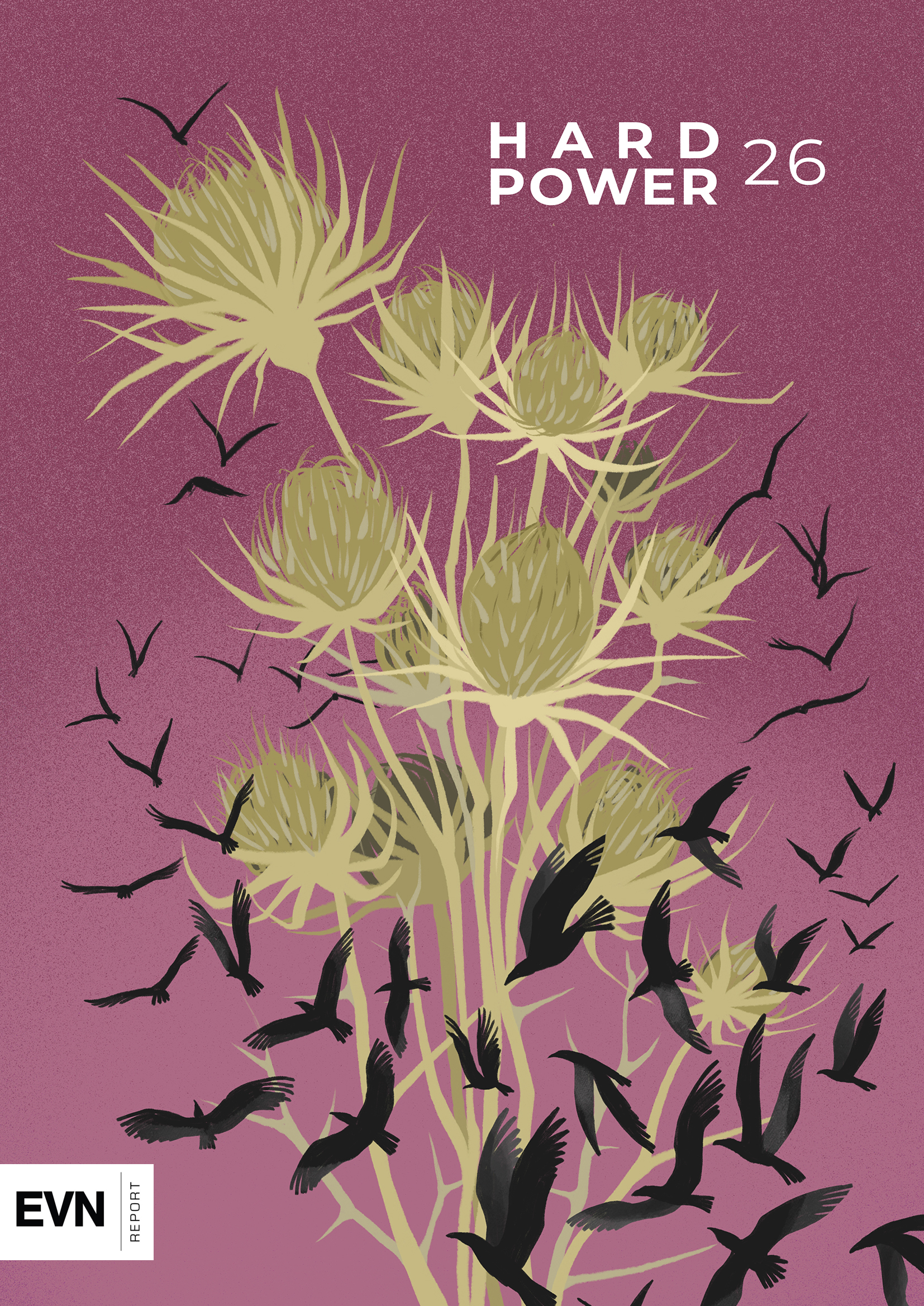
Today, Armenia is putting out a considerable volume of literary translation in an attempt to satisfy both artistic and professional demand. Works of fiction by authors from antiquity to well-known 20th century writers are now available in Armenian, including classics and contemporary, lighter reads such as romantic novels and mysteries.
The scope of languages being translated into Armenian has also expanded in recent years. Aside from the once dominant Russian and the later “classic” English-German-French trinity, we now have translations from Spanish, Italian, Portuguese, Greek, Japanese, Swedish, Georgian, Polish, Latvian, Persian, Arabic, Hebrew and many others. Translations from an intermediary language — usually Russian — have almost disappeared. Even some classics that were once only available in Armenian through translations from Russian are now being translated anew from their original languages. The quality of translations has also benefited from the translator-editor-copy editor collaboration, and numerous linguistic distortions have been worked out and texts that reach readers today are more refined.
In conjunction with the growing volume of translations, the number of translators is also increasing. The work done in Spanish-language world literature — comprising 21 countries, each with their specific historic-geographical context, unique spoken word and classic as well as contemporary literature — is notable. To translate the best from this boundaryless Spanish-speaking and reading world, even more translators will be needed.
It would be wonderful to expand the scope of translations from Spanish-language authors taking into account that Spanish is one of the most spoken languages in the world (approximately 550 million people worldwide speak the language). When it comes to famous Spanish-language writers whose works have stood the test of time, the choice is clear. In the case of contemporary writers, however, the works of those who have won prestigious awards are usually chosen to be translated. This logic technically makes sense, but it isn’t always the best criteria when it comes to selecting a work for translation. Today, Armenian publishers have far greater opportunities than before to connect with counterparts from different countries at book fairs they attend. And it would be worthwhile and beneficial, if Armenian publishers could acquire translation rights to as many Spanish language works as possible — not necessarily only those that win awards. In that case translators, reading through all these works can recommend the best titles to publishers and the expediency of moving forward with the translation can be determined jointly. This process is important since the Spanish reading audience is enormous, and there are sometimes very “local” topics targeting specific audiences familiar with that context. If a reader is not familiar with the context and barring an independent dive into becoming familiar with the issue, they will quickly lose interest in the book. If such works are still chosen for translation, an elaborate introduction and annotations would be warranted, even if it adds substantial volume to the Armenian translation.
There is also a need to consider the theoretical works of well-known 20th century Spanish-language authors who have had a significant impact on the literature of the century. The works of Spanish authors like philosopher, essayist, novelist, poet and playwright Miguel de Unamuno and philosopher José Ortega y Gasset, as well as Mexican writer, poet and diplomat Octavio Paz, are still waiting for their Armenian translators. Their essays will undeniably be valued by those interested in literature, philosophy, cultural studies and political science.
The works of Armenian authors who have written in foreign languages should also not be ignored, especially when these works pertain to Armenia and Armenians. The work already being done in this area must be expanded,[1] and should also include translations from Spanish.[2]
It would be especially interesting to translate Spanish-language academic work in the humanities, as well as the fiction that the Spanish world enjoys so much but has nothing to do with Armenianness. For example, Argentinian-Armenian philosopher and novelist and Dean of the Faculty of Philosophy and Humanities of Cordoba University Diego Tatian’s works on Baruch Spinoza[3] are read with great interest, not only in Argentina and the Spanish-speaking world, but are also translated, for example, into Turkish. Recently, Tatian was the guest of a philosophy symposium in Istanbul; meanwhile, the Armenian reader is familiar with only a small part of his short story collection.[4]
It is also important to follow the work of non-Armenian authors on topics related to Armenia or Armenians. Their motivations for addressing Armenian issues are interesting stories in themselves. For example, young Ecuadorian poet Carla Badillo Coronado, inspired by Sergei Parajanov’s “The Color of Pomegranates”, depicts her own perception of Sayat-Nova[5] in her poem by the same name, which won the LOEWE Young Poets Prize. This is an opportunity to simultaneously draw attention to Armenia and to better understand foreign perceptions of Armenia and Armenian culture.
Another extremely important task is translating works from Armenian to Spanish. It is no secret that people are more impacted by fictional work and storytelling than the already normalized news and about violence and death. The story of one person or one family is often more provoking than the tragedy of a whole nation.
In pursuing this translation work, several obstacles emerge. One of the most important problems is the lack of Armenian to Spanish dictionaries. For now, this paucity is mitigated through intermediary third language dictionaries and the explanatory dictionary of the Royal Academy of Spain. The other issue is organizational. There is a need for publishers who are interested in publishing Armenian to Spanish translations and who are not only willing to cover expenses but also to ensure that a native Spanish-speaking editor works alongside the translator. Besides some rare cases, when the organizational work is done by a publisher or a literary agent, a translation is initiated and completed by the translator who then pitches and promotes the work to a publisher; then again it is not imperative that translators be organizationally proactive.
Armenians living in Spanish-speaking countries can help with Armenian-Spanish translations, especially if they are involved in literary-publishing circles and can facilitate relationships with publishers and pitch translations themselves. Presenting a published book at internationally acclaimed book fairs is also of utmost importance, as it can connect translators with interested publishers. For example, a poetry selection entitled “A Language Is Also Fire: 20 Poets From Armenia”[6] was first published in Argentina, then Mexico and Colombia. An Argentinian publisher, being introduced to Armenian poet Marine Petrossian’s work through that book, later published a separate selection of Petrossian’s poems, entitled “Disparó el arma”. Not long after, when an initiative on conflicts came about, Armenian readers had the opportunity to read about the Malvinas War, known as the Falklands War through the publication of “Malvinas” by Mario Sampaolesi, and Argentinians could read about the heroic struggle of Artsakh through a collection of short stories entitled “The Wire Was Not Visible in the Grass”[7] –– a selection of works by Levon Khechoyan and Hovhannes Yeranyan.
These publications are also an opportunity to invite authors to different countries. Marine Petrossian and Hovhannes Yeranyan visited Buenos Aires where they had meetings and discussions at Armenian community centers, and were interviewed for Argentinian media and television. Cultural diplomacy, as such, connects with different audiences, inducing more understanding and empathy across cultures on issues important for us more effectively than political analysis. We often do not notice how similar people living across the globe can be –– people with different mentalities and problems. For example, it would seem that the 1982 war between Argentina and Great Britain for the Malvinas or Falkland Islands and the 2020 Artsakh War could not be more different. A closer look at the Malvinas War, however, makes the parallels evident.
Translations allow for a reciprocal understanding of a variety of issues, creating a common cultural space conducive for the understanding of national identity. During the 2020 Artsakh War, Aram Pachyan’s and Narine Kroyan’s stories were translated into Spanish, among several other languages, on the initiative of the Ari Literary Agency. A Bolivian writer, involved in discussions around the stories before their publication in the Inmediaciones online magazine, was astonished to find out that Armenians have a word signifying the loss of a son –– Vordekoruys. While aware of the tragedies that have befallen the Armenian nation, it was the author’s discovery of this word that allowed for a fuller understanding of the imprint of human loss on Armenians’ linguistic and national disposition.
While it is not necessary that a translator’s expertise match the particular linguistic structure of the country of the text being translated, working with a native Spanish editor is important. For example, the Spanish spoken in Argentina and Uruguay is to some extent grammatically distinct from the Spanish of other countries. This, of course, is not a major issue for the native Spanish reader, but it still warrants consideration about the country the translation will be published in. Aside from grammatical nuances, each country has its own vocabulary and a system for synonyms. While translating an excerpt from Armen Shekoyan’s poem “Yerevan Hotel”, I was worried that the sheer number of nicknames used, which I addressed through annotations, might repel the reader. However, the poem was very well received, because in Latin American countries, particularly in Argentina and Uruguay, it is customary to call each other by nicknames.
Translating is a rather solitary occupation. But this does not mean that translators don’t need professional cooperation –– not only among one another but also with publishers, editors and copy-editors. And since the field of translation is rapidly developing, it would be advisable to standardize innovations and agree on the rules of transliteration, including how to write proper names. While it is commendable that discussions on these issues are being had today, each publication still has its own house rules which keep the reader in constant tension seeing the same word transliterated in different ways.
The quality of a translation can be assessed by the reader and by awards alike. If Armenia were to have similar opportunities, it would greatly contribute to clarifying how Armenian translations are evaluated.
Footnotes:
[1] An example of work already being done is the newmag.am publication of the memoirs of Charles Aznavour, Anna Astvatsaturian Turcotte, Vartan Grigoryan and Sati Spivakova.
[2] Magda Tagtachian‘s novel “Rojava” was published in 2021.
[3] In addition to other works, “Spinoza: una introducción; Barouch; Spinoza y el arte; Spinoza disidente; Spinoza: filosofía terrena; Spinoza: el don de la filosofía”.
[4] Afternoon (Short Stories), Diego Tatian, Yerevan, Aredit, 2012.
[5] El Color de la granada, Carla Badillo Coronado, Loreni, Yerevan, 2021.
[6] Un idioma también es un incendio. 20 poetas de Armenia, Alción Editora, Bs.As., 2013.
[7] El alambre no se percibía entre la hierba /relatos sobre la guerra de Karabagh/, ediciones Hecho atómico, Bs.As.2014.
Magazine Issue N27
Books & Literature
The magazine issue for March — “Books and Literature” — include articles about the art of translation, what it means to be a literary agent in modern day Armenia, memory and literature, how books can help teach children about disabilities, and how Armenian literature created the image of Yerevan as a “sunny city” during the last century, serving as a lens to read the capital of the country.
How Children’s Literature Can Help Combat Stereotypes
Reading children's literature that includes characters with disabilities can be instrumental in changing attitudes and social stereotypes, writes Armenuhi Avagyan.
Read moreLiterary Agenting: The Good and the Bad
What does it mean to be a literary agent? What should one know about a job which can be time-consuming and exhausting but can also bring incredible satisfaction? Literary agent Arevik Ashkharoyan shares her thoughts and sometimes funny experiences.
Read moreMagazine Issue N26
Hard Power
Magazine Issue N24
Soft Power






